- Home
- Neil Gaiman
The View from the Cheap Seats Page 18
The View from the Cheap Seats Read online
Page 18
The Clone by Theodore Thomas and Kate Wilhelm
Dr. Bloodmoney by Philip K. Dick
Dune by Frank Herbert
The Escape Orbit by James White
The Genocides by Thomas M. Disch
Nova Express by William Burroughs
A Plague of Demons by Keith Laumer
Rogue Dragon by Avram Davidson
The Ship That Sailed the Time Stream by G. C. Edmondson
The Star Fox by Poul Anderson
The Three Stigmata of Palmer Eldritch by Philip K. Dick
I love that list. It has so much going on—SF and fantasy of all shapes and sizes, jostling side by side. Traditional and iconoclastic fictions, all up for the same Lucite block.
And if you’re wondering, the 1965 Nebula winners were,
Novel: Dune by Frank Herbert
Novella: He Who Shapes by Roger Zelazny and The Saliva Tree by Brian Aldiss (tie)
Novelette: “The Doors of His Face, the Lamps of His Mouth” by Roger Zelazny
Short Story: “‘Repent, Harlequin!’ Said the Ticktockman” by Harlan Ellison
. . . it was a good year.
Forty years on and we’re now living in a world in which SF has become a default mode. In which the tropes of SF have spread into the world. Fantasy in its many forms has become a staple of the media. And we, as the people who were here first, who built this city on pulp and daydreams and four-color comics, are coming to terms with a world in which we find several things they didn’t have to worry about in 1965.
For a start, today’s contemporary fiction is yesterday’s near-future SF. Only slightly weirder and with no obligation to be in any way convincing or consistent.
It used to be easy to recognize SF written by mainstream authors. The authors always seemed convinced that this was the first novel to tackle faster-than-light travel, or downloadable intelligence, or time paradoxes or whatever. The books were clunky and proud of themselves and they reinvented the wheel and did it very badly, with no awareness of the body of SF that preceded them.
That’s no longer true. Nowadays things that were the most outlandish topics of SF are simply building blocks for stories, and they aren’t necessarily ours. Our worlds have moved from being part of the landscape of the imagination to being part of the wallpaper.
There was a battle for the minds of the world, and we appear to have won it, and now we need to figure out what we’re doing next.
I always liked the idea that SF stood for “speculative fiction,” mostly because it seemed to cover everything, and include the attitude that what we were doing involved speculation. SF was about thinking, about inquiring, about making things up.
The challenge now is to go forward and to keep going forward: to tell stories that have weight and meaning. It’s saying things that mean things, and using the literature of the imagination to do it.
And that’s something that each of us, and the writers who will come afterwards, are going to have to struggle with, to reinvent and make SF say what we need it to say.
Anyway.
Something that, after half a lifetime in this field and a lifetime as a reader, I think worth mentioning and reminding people of, is that we are a community.
More than any field in which I’ve been involved, the people in the worlds of SF have a willingness to help each other, to help those who are starting out.
When I was twenty-two, half a lifetime ago, I went to a Brian Aldiss signing at London’s Forbidden Planet. After the signing, at the pub next door, I sat next to a dark, vaguely elfin gentleman named Colin Greenland who seemed to know a lot about the field and who, when I mentioned that I had written a handful of stories, asked to see them. I sent them to him, and he suggested a magazine that he’d done some work for that might publish one of them. I wrote to that magazine, cut the story down until it met their word-count requirements, and they published it.
That short story being published meant more to me at the time than anything had up to that point, and was more glorious than most of the things that have happened since. (And Colin and I have stayed friends. About ten years ago, he sent me, without the author’s knowledge, a short story by someone he’d met at a workshop named Susanna Clarke . . . but that’s another story.)
Six months later I was in the process of researching my first genre book. It was a book of SF and fantasy quotations, mostly the awful ones, called Ghastly Beyond Belief. [And at this point in the speech I wandered off into an extempore bit of quoting from Ghastly Beyond Belief, by me and Kim Newman, mostly about giant crabs. And space crabs too. I’m not going to try and reproduce it here, sorry.]
. . . and I found myself astonished and delighted by the response within the field. Fans and authors suggested choice works by authors they loved or didn’t. I remember the joy of getting a postcard from Isaac Asimov telling me that he couldn’t tell the good from the bad in his works, and giving me blanket permission to quote anything of his I wanted to.
I felt that I’d learned a real lesson back then, and it’s one that continues to this day.
What I saw was that the people who make up SF, with all its feuds—the roots of most of which are, like all family feuds, literally, inexplicable—are still a family, and fundamentally supportive, and particularly supportive to the young and foolish.
We’re here tonight because we love the field.
The Nebulas are a way of applauding our own. They matter because we say they matter, and they matter because we care.
They are something to which we can aspire. They are our way—the genre’s way, the way of the community of writers—of thanking those who produced sterling work, those who have added to the body of SF, of fantasy, of speculative fiction.
The Nebulas are a tradition, but that’s not why they’re important.
The Nebula Awards are important because they allow the people who dream, who speculate, who imagine, to take pride in the achievements of the family of SF. They’re important because these Lucite blocks celebrate the ways that we, who create futures for a living, are creating our own future.
* * *
This speech was given in Chicago on April 30, 2005, in celebration of the fortieth anniversary of the Nebula Awards.
* * *
IV
FILMS AND MOVIES AND ME
“It’s oneiric, a beautiful, formless sequence of silver nitrate shadows, and when it ends I wonder what happened.”
The Bride of Frankenstein
Films deliver their pleasures in different ways. Many films give you everything they have to offer the first time you see them, leaving you nothing for another viewing. Some deliver what they have grudgingly on first viewing, only to reveal their magic on subsequent occasions, when things become increasingly satisfying. Very few films are dreams, configuring and reconfiguring themselves in your mind on waking. These films, I think, you make yourself, afterwards, somewhere in the shadows in the back of your head. The Bride of Frankenstein is one of those dream-films. It exists in the culture as a unique thing, magical and odd: a lurching story sequence as ungainly and as beautiful as the monster itself, that culminates in a couple of minutes of film that have seared themselves onto the undermind of the world.
It’s a lot of people’s favorite horror film. Dammit, it’s my favorite horror film. And yet . . .
My daughter Maddy loves the idea of The Bride of Frankenstein: she’s ten. Last year, captivated by the little statue of Elsa Lanchester in frightwig that stands, facing a statue of Groucho Marx, on a window ledge halfway up the stairs, she decided to be the Monster’s Bride for Hallowe’en. I had to find her imagery of Karloff and his bride-to-be, e-mail her photos of them. Several weeks ago, finding myself in sole charge of Maddy and her friend Gala Avary, I made them hot chocolate and we watched The Bride of Frankenstein.
They enjoyed it, wriggling and squealing in all the right places. But once it was done, the girls had an identical reaction. “Is it over?” asked one. “That was weird,” said the
other, flatly. They were as unsatisfied as an audience could be.
I felt vaguely guilty—I knew they would have enjoyed House—or is it Ghost?—of Frankenstein, the one with Karloff as a mad scientist, and John Carradine’s Dracula, not to mention a Lon Chaney Jr. wolfman—so much more. It’s a romp, after all. It may not be scary, but it feels like a horror film, and it would have delivered everything two ten-year-olds needed to be satisfying.
The Bride of Frankenstein doesn’t romp. It’s oneiric, a beautiful, formless sequence of silver nitrate shadows, and when it ends I wonder what happened, and then I begin to rebuild it in my head. I’ve seen it I do not know how many times since I was a boy, and I’m almost pleased to say that I still can’t quite tell you the plot. Or rather, I can tell you the plot as it goes along. And then, when it’s done, the film begins to scum over in my mind, to reconfigure like a dream does once you’ve wakened, and it all becomes much harder to explain.
The film begins with Mary Shelley, Elsa Lanchester, all sly smiles and period cleavage, talking to an intensely dull Byron and Shelley, introducing us to a sequel to the original Frankenstein story. And then it’s moments after the first film, Frankenstein, and the story starts again. The monster survived. The status quo has been restored.
Henry Frankenstein (Colin Clive) is getting married to the wimpy Elizabeth (Valerie Hobson). (The wimpy Elizabeth is the real bride of Frankenstein, and is, I suspect, given the film’s title, one of the main factors responsible for the confusion in the popular mind between the scientist and his monster.)
Ernest Thesiger’s Dr. Pretorius, a far madder scientist than our Henry, strides into Henry Frankenstein’s life, like a man bringing a bottle of absinthe to a reformed addict. Dr. Pretorius, waspish, camp, unforgettable, trolls in from a world much more dangerous than Henry’s. He’s sharp and funny, steals scenes, and has a marvelous sequence with bottled homunculi—lovers, a king, a priest. This has something to do with his own alchemical researches into creating life, and, I find myself thinking whenever I watch it, nothing at all to do with the film at hand. It sits in the mind like a dream, inexplicable, a moment of movie magic. I find myself fancying director James Whale as Pretorius here, the homunculi his actors, ready to lust or lecture or die as he desires.
Henry Frankenstein himself is feverish, and strangely absent from the film that bears his name, emotionally and truly. The alcoholism (and perhaps the tuberculosis) that would soon enough carry off Colin Clive is already muting his vitality. All the monsters have more life in them than Henry Frankenstein does now, and watching the film I imagine that they will live longer, once the action is over.
Karloff plays the Monster. His face is part of the strange experience of the film: we have seen many people since Karloff who have portrayed Frankenstein’s Monster, but none of them were the real thing: they looked too brutish, or too comical—Herman Munsters in waiting. Karloff is something else: sensitive, hurting, a former brute now learning language and longing and love. There is little in the monster to be frightened of.
Instead we pity him, sympathize with him, care about him.
(The sequence with the blind hermit is subject to slippage in my mind with its parody in Young Frankenstein. I worry, when I see the blind man in Bride, that he will pour hot soup on the monster, or set light to him, and am always relieved when they survive the meal unscathed. Instead, unable to see the monster, the hermit is the only one who is able to look at the monster without prejudice.)
James Whale, directing the film with elegance and panache, builds lovely catacombs. There is a terrible beauty in each perfectly composed shot, just as there is wit and poetry in William Hurlbut’s script.
Of course, it’s hard to care a twopenny fig for either Henry or Elizabeth, and I suspect that Whale knew that: from being the tragic focus of the first movie, Henry Frankenstein now becomes the film’s Zeppo, a bland lover in a cast of shambling zanies. It’s one reason why the film feels so subversive, and so deeply surreal. In Bride of Frankenstein, all is prelude to the unwrapping of Elsa Lanchester, the revelation of the true Bride, the one that the movie’s really named after. She is revealed; she hisses, screeches, is terrified, is wonderful, and once we have seen her there is nothing left for us. As Karloff’s monster realizes that she, too, fears him, he slips from joyful hope to despair with a look, and moves over to pull the now traditional blow-up-the-lab switch.
But Elsa and Karloff are the perfect couple, too vivid, too alive to have died in the final explosion. Even as Henry and Elizabeth fade from the imagination, the monster and his mate live on forever, icons of the perverse, in our dreams.
* * *
This essay originally appeared in the collection Cinema Macabre, edited by Mark Morris, 2005.
* * *
MirrorMask: An Introduction
Somewhere in North London, as I type this, Dave McKean is hard at work on MirrorMask. He’s sighing and frowning and working extremely long hours, just as he has for the last eighteen months, compositing shots and solving problems. Dave designed and directed and composed every shot in MirrorMask. The finished film has to be delivered at the end of this month. If there’s one thing he doesn’t have time for, it’s writing introductions.
So this is the story of MirrorMask according to me.
It was the summer of 2001. The phone rang. It was Lisa Henson, and she wanted to know whether I thought Dave McKean would be interested in making a fantasy film for them—something in a similar vein to Labyrinth. Although, she said, Labyrinth had cost the Jim Henson Company about forty million to make twenty years earlier, and, while the funding for a new film existed, there wasn’t very much of it: only four million dollars, which is a lot of money if you come across an abandoned suitcase full of cash in a hollow tree somewhere, but won’t get you very far in the world of fantasy filmmaking. She had seen Dave’s small films and loved them. Did I think that Dave would be interested? I said I didn’t know.
Obviously, said Lisa, she couldn’t afford to pay me for writing a script. Maybe I could help a writer come up with the story . . . ? I told her that if Dave said yes to directing it, I was writing the script, and that was all there was to it.
Dave said yes.
I had half an idea, and I wrote it down and sent it to Dave. A girl from a traveling theater, who found herself kidnapped into some kind of fairyland by a fairy queen. An unreliable Puck-like guide. A girl forced to become or to pretend to become a fairy princess, while a real fairy princess was forced to try and pretend to be human.
Meanwhile, Dave had had a dream, and on waking decided it might be the basis for a good film: a mother in the real world who is extremely ill, a world of masks, a girl who had to wake the sleeping white queen, a white queen and a dark queen, a balance that was shifting and breaking. He sent me an e-mail, describing the dream, and his idea for a film, and several other ideas he had had for the feel of what he wanted to convey.
I wondered whether we could combine the two ideas.
In February of 2002, the Jim Henson Company sent me to England for two weeks. To save money, and because we both thought it an excellent idea, Dave and I stayed in the Henson family house in Hampstead. It hadn’t been decorated since Jim Henson died, and everywhere we were surrounded by his world. In a cupboard in the lounge we found a video of an early edit of Labyrinth, over three hours long with the voices of the puppeteers doing their characters rather than the actors, and we watched it in the evening over a few nights, to help put us into the mood. Dave had a pile of art books with him, books on surrealism and sculpture, books filled with imagery that he thought might come into play in the story.
Dave McKean and I had worked together very happily for about sixteen years at that point. It had always been easy. This wasn’t.
Mostly it wasn’t, because Dave and I wrote, we discovered, in completely different ways. He plans it all out, and writes every idea down on little cards, needs it to all be done before the first word of script is written; whereas I’ll talk
about it to the point where I’m ready to start writing, and then I start writing and find out the rest of it as I go along. These methods of working are not entirely compatible. That was half of the problem. The other half of the problem was that Dave knew what he could and couldn’t do, in order to make a film with the money that we had, and I didn’t.
“I want to do a scene in Helena’s school,” I’d say.
“Can’t do it,” Dave would explain. “Too expensive. We’d need the class, and a teacher and kids as extras,” and then, seeing my face fall, he’d add, “but we can make the world crumple up like a piece of paper, if you want. That won’t cost us anything.”
Still, Dave’s certainties were reassuring. It’s often easier to make art if you know what your boundaries are. In the case of MirrorMask, I wrote down in the basement kitchen, where it was warm (right now I’m writing this in the kitchen of a borrowed house, which goes to demonstrate consistency, I think), while Dave mostly worked several floors up, where there was light and a grand piano.
Our touchstone was something Terry Gilliam had once said about his wonderful film Time Bandits. He said he wanted to make a film intelligent enough for children, but with enough action in it for adults. And so did we.
I started writing.
Dave would suggest things that would, he hoped, be easy and relatively cheap to make in the world of computer animation—twining shadow-tentacles or formless black bird-shapes.
Several times during that week, Dave would go off and do a first draft of a scene on his own, to show me what he meant, and I’d fold that in—the first drafts of the Giants Orbiting sequence, the Monkeybirds and the scene looking for the dome in the Dreamlands were all Dave’s, for example, as was the Librarian’s Origin of the World speech, which Dave wrote long before we started writing the film. I’d tidy them up, and noodle with the dialogue. He for his part would look over my shoulder at the dialogue I was writing on the screen and point out whenever I was starting to sound like Terry Jones writing Labyrinth, and then I would try to make it sound a bit more like me writing MirrorMask.

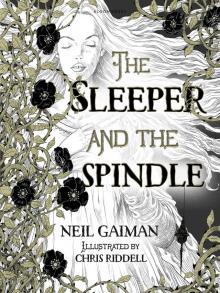 The Sleeper and the Spindle
The Sleeper and the Spindle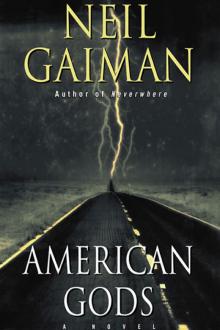 American Gods
American Gods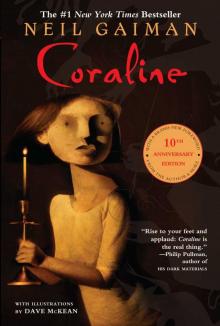 Coraline
Coraline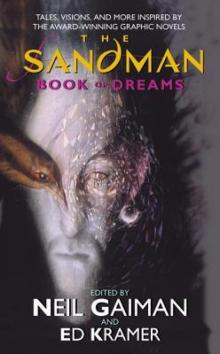 The Sandman: Book of Dreams
The Sandman: Book of Dreams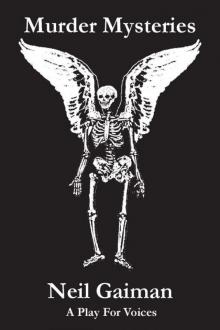 Murder Mysteries
Murder Mysteries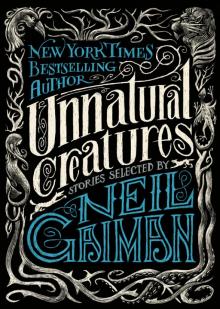 Unnatural Creatures
Unnatural Creatures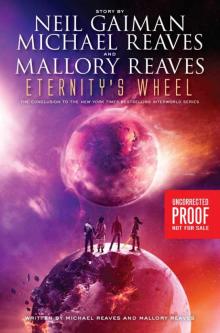 Eternity's Wheel
Eternity's Wheel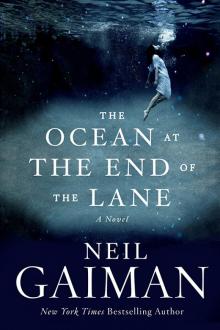 The Ocean at the End of the Lane
The Ocean at the End of the Lane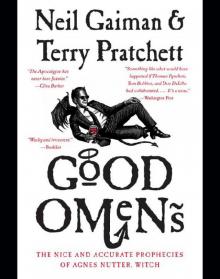 Good Omens
Good Omens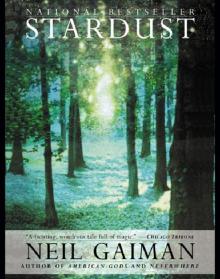 Stardust
Stardust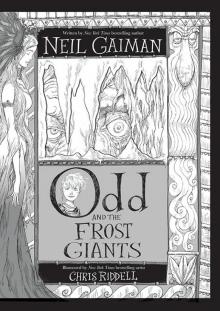 Odd and the Frost Giants
Odd and the Frost Giants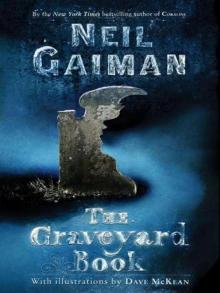 The Graveyard Book
The Graveyard Book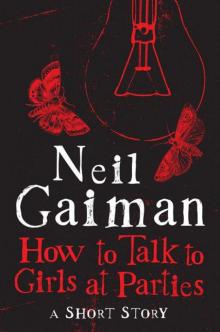 How to Talk to Girls at Parties
How to Talk to Girls at Parties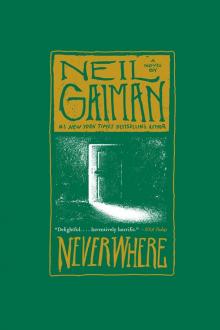 Neverwhere
Neverwhere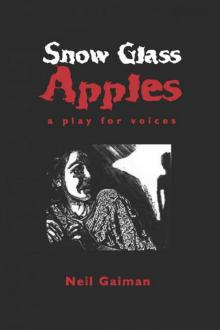 Snow, Glass, Apples
Snow, Glass, Apples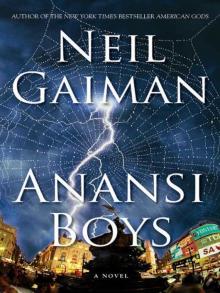 Anansi Boys
Anansi Boys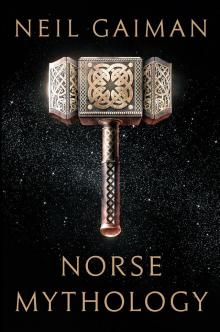 Norse Mythology
Norse Mythology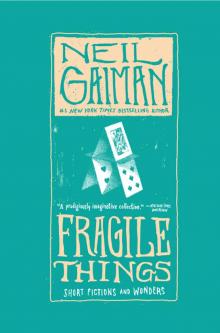 Fragile Things: Short Fictions and Wonders
Fragile Things: Short Fictions and Wonders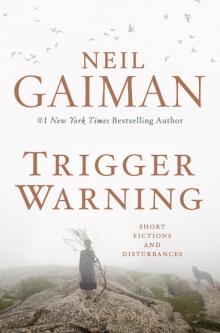 Trigger Warning: Short Fictions and Disturbances
Trigger Warning: Short Fictions and Disturbances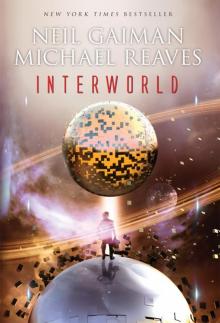 InterWorld
InterWorld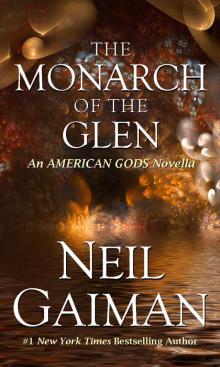 The Monarch of the Glen
The Monarch of the Glen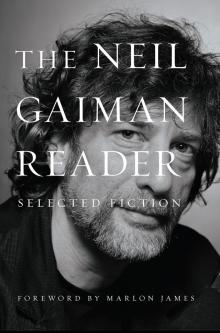 The Neil Gaiman Reader
The Neil Gaiman Reader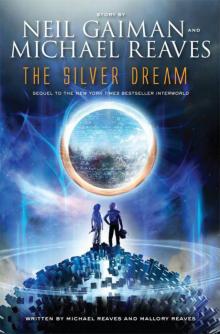 The Silver Dream
The Silver Dream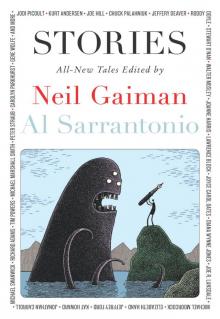 Stories
Stories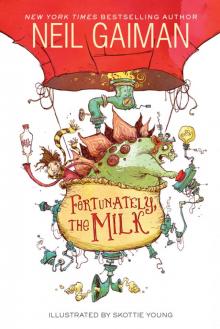 Fortunately, the Milk
Fortunately, the Milk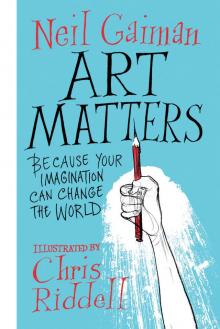 Art Matters
Art Matters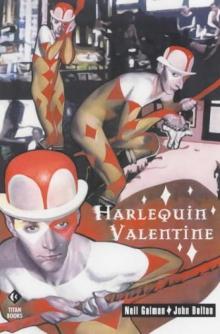 Harlequin Valentine
Harlequin Valentine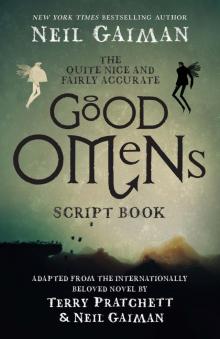 The Quite Nice and Fairly Accurate Good Omens Script Book
The Quite Nice and Fairly Accurate Good Omens Script Book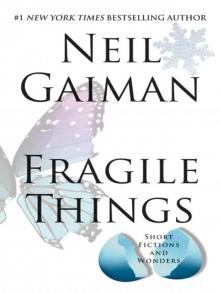 Fragile Things
Fragile Things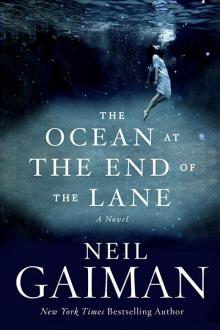 The Ocean at the End of the Lane: A Novel
The Ocean at the End of the Lane: A Novel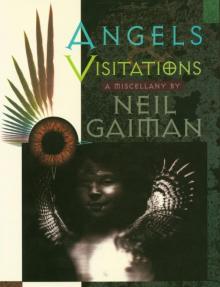 Angels and Visitations
Angels and Visitations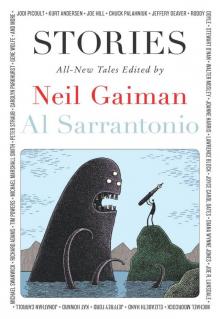 Stories: All-New Tales ngss-1
Stories: All-New Tales ngss-1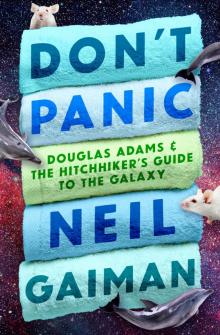 Don't Panic
Don't Panic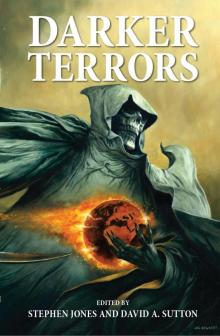 Darker Terrors
Darker Terrors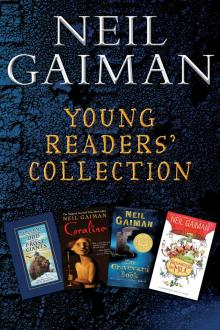 Neil Gaiman Young Readers' Collection
Neil Gaiman Young Readers' Collection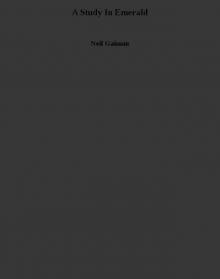 A Study In Emerald
A Study In Emerald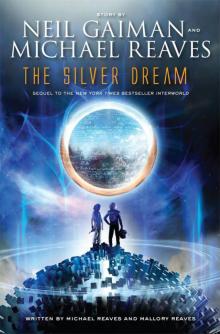 The Silver Dream: An InterWorld Novel
The Silver Dream: An InterWorld Novel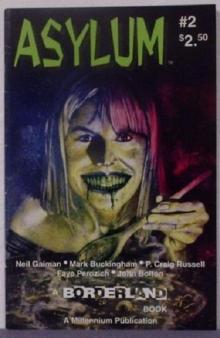 Feeders and Eaters
Feeders and Eaters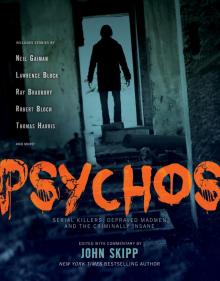 Psychos
Psychos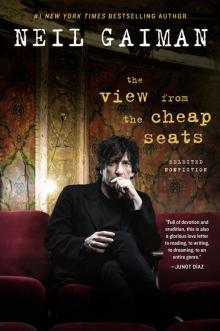 The View from the Cheap Seats
The View from the Cheap Seats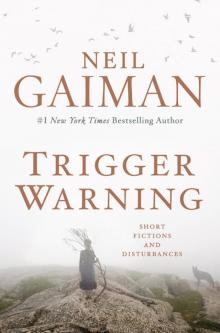 Trigger Warning
Trigger Warning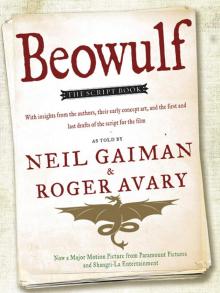 Beowulf
Beowulf Nessun Dove
Nessun Dove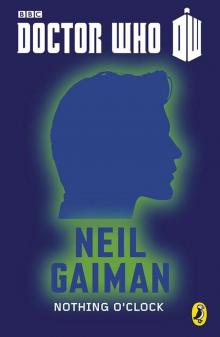 Doctor Who: Nothing O'Clock: Eleventh Doctor: 50th Anniversary
Doctor Who: Nothing O'Clock: Eleventh Doctor: 50th Anniversary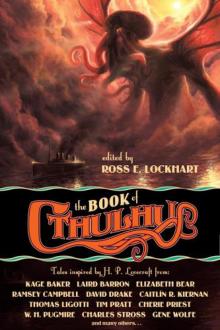 The Book of Cthulhu
The Book of Cthulhu